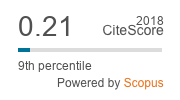Equivalência de Estímulos e Redução de Dificuldades na Solução de Problemas de Adição e Subtração
Mots-clés :
Ciências Humanas;Psicologia;Psicologia da Educação Matemática;Ensino-aprendizagem da Matemática, Resolução de problemas, Adição e subtração, Equivalência de estímulos, Ensino de algoritmosRésumé
Foi avaliado se a formação de uma classe de equivalência entre quatro tipos de problemas de adição aumenta a porcentagem de acertos de crianças em problemas com diferentes formas de apresentação, posições da incógnita e estruturas semânticas. Participaram oito estudantes do 2° ao 5° ano do Ensino Fundamental com baixa porcentagem de acertos na resolução de problemas de adição e subtração. Após a formação da classe ocorreram mais acertos em todos os tipos de problemas. Investigou-se então o efeito do ensino de algoritmos sobre esse desempenho. Alguns participantes apresentaram melhoras. No Teste de Generalização todos obtiveram 100% de acertos. A formação de classe de equivalência e o ensino de algoritmos contribuíram para a melhora no desempenho de resolução de problemas.
Téléchargements
Références
Costa, A. L. M., Galvão, O. F., & Ferreira, B. P. (2008). ARIT ”“ um software baseado em equivalência de estímulos dirigido a crianças com histórico de fracasso na aprendizagem de conceitos aritméticos. In: Sociedade Brasileira de Computação (Ed.), Anais do XIX Simpósio Brasileiro de Informática na Educação [CD], (pp. 125-134) Fortaleza: SBC.
Fayol, M. (1992). From number to numbers in use: Solving arithmetic problems. In J. Bideaud, C. Meljac, & J. P. Fischer (Eds.), Pathways to number: Children’s developing numerical abilities (pp. 283-306). New Jersey: Lawrence Erlbaum Associates.
Fossa, J. A., & Sá, P. F. (2008). Uma distinção entre problemas aritméticos e algébricos. Revista Educação em Questão, 33(19), 253-278.
Haydu, V. B., Paranzini, A. C. S., Isquierdo, G. R., Ausec, H. O., Mazzo, I. M. B., Pires, I. T. M., ... & Pimentel, N. S. (2001). Dificuldades e facilidades produzidas pela forma de apresentação de problemas aritméticos com a incógnita em diferentes posições. In M. C. Marquezine, M. A. Almeida & E. D. O. Tanaka (Eds.), Perspectivas multidisciplinares em Educação Especial II (pp. 593-601). Londrina, PR: Eduel.
Haydu, V. B., Costa, L. P., & Pullin, E. M. M. P. (2006). Resolução de problemas aritméticos: efeito de relações de equivalência entre três diferentes formas de apresentação dos problemas. Psicologia: Reflexão & Crítica, 19, 44-52.
Hiebert, J. (1982). The position of the unknown set and children’s solutions of verbal arithmetic. Journal for Research in Mathematics Education, 13, 341-349.
Iégas, A. L. F. (2003). Software para a resolução de problemas aritméticos: o modelo da balança. (Dissertação de Mestrado não publicada). Universidade Estadual de Londrina, Paraná.
Magina, S. P. M., Santana, E. R. S., Cazorla, I. M., & Campos, T. M. M. (2010). As estratégias de resolução de problemas das estruturas aditivas nas quatro primeiras séries do Ensino Fundamental. Zetetiké, 18(34), 15-50.
Marcicano, D. C., Carmo, J. S., & Prado, P. S. T. (2011). Software ProgMTS: possibilidades de delineamento e condução de programas de ensino em Análise Experimental do Comportamento [Computer software ]. Anais da 41ª Reunião Anual da Sociedade Brasileira de Psicologia: formação e produção do conhecimento em psicologia, Belém.
Neef, N. A., Nelles, D. E., Iwata, B. A., & Page, T. J. (2003). Analysis of precurrent skills in solving mathematics story problems. Journal of Applied Behavior Analysis, 36, 21-33.
Nesher, P., Greeno, J. G., & Riley, M. S. (1982). The development of semantic categories for addition and subtraction. Educational Studies in Mathematics, 13(4), 373-394.
Nunes, T., & Bryant, P. (1996). Giving meaning to addition and subtraction. In T. Nunes, & P. Bryant (Eds.), Children doing mathematics (pp. 114-141). Oxford: Blackwell.
Resnick, L. B., & Rosenthal, D. J. A. (1974). Children’s solution processes in arithmetic word problems. Journal of Educational Psychology, 66, 817-825.
Sidman, M., & Tailby, W. (1982). Conditional discrimination vs. matching to sample: An expansion of the testing paradigm. Journal of the Experimental Analysis of Behavior, 37(1), 5-22.
Sophian, C. (1996). The sum of the parts. In C. Sophian (Ed.), Children’s numbers (pp. 73-88). Colorado: Westview Press.
Verschaffel, L., & De Corte, E. (1997). Word problems: A vehicle for promoting authentic mathematical understanding and problem solving in the primary school? In T. Nunes, & P. Bryant (Eds.), Learning and teaching mathematics: An international perspective (pp. 69-97). Hove, England: Psychology Press.



